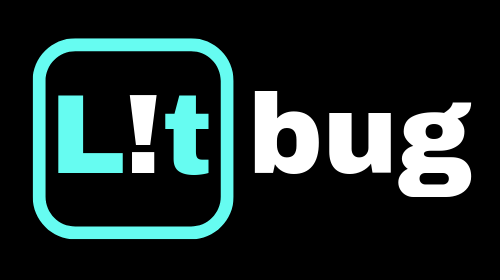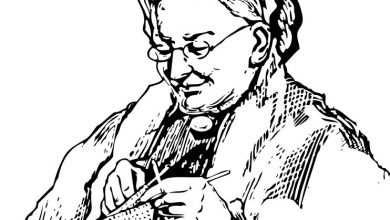“The Knife” by Richard Selzer provides a poetic and contemplative portrayal of the surgeon’s role, the precision and violence of surgery, and the deep connection between the surgeon and the instrument. Selzer’s use of rich imagery and metaphorical language elevates the description of surgery beyond the clinical, inviting readers to reflect on the profound and complex nature of this medical practice.
The Knife | Summary
In the story, the author delves into the emotional and technical aspects of surgery, using vivid and poetic language to create an immersive experience. The narrative begins with the surgeon’s delicate grip on the knife, comparing it to the way one holds a cello bow or a tulip stem. The knife’s power and precision are marveled at, but there is also a sense of dread as the surgeon realizes that it is in their hand to open up a human body.
The act of surgery is likened to a solemn and ritualistic service, with the surgeon donning a gown and mask, the instruments taking on a religious significance, and the surgical site becoming a temple. The surgeon’s profession is described as a kind of priestly role, with vows and sacrifices made in pursuit of the truth hidden within the human body.
As the surgeon proceeds with the operation, the passage offers a detailed account of the steps involved, from clamping and cutting to exploring deeper into the body. The organs are described with vivid colors and textures, and the surgeon’s heightened sense of touch is likened to that of the blind. There is a sense of trespassing into a primitive place, filled with both vulnerability and welcoming.
When the surgeon discovers cancer, the tone shifts to urgency and professionalism. The story now emphasizes the enduring history of the knife as a tool for surgery, dating back thousands of years, and its transformative power when equipped with a blade. The act of cutting through flesh is compared to a barracuda’s swift attack or the penetration of rape, acknowledging the violence inherent in surgery.
As the surgery concludes and the wound is sutured, the intense action of the knife gives way to a moment of stillness and silence. The narrative ends with the knife resting on its side, spent but ready to be used again.
The Knife | Analysis
The story follows a descriptive and reflective narrative structure. It begins with the surgeon’s delicate handling of the knife, progresses through the surgical process with rich sensory details and metaphors, and ends with a moment of stillness and contemplation after the surgery is completed. The narrative unfolds in a linear fashion, taking the reader on a journey into the operating room and the surgeon’s thoughts and emotions. The story is primarily a first-person narrative, with the surgeon’s perspective and introspection serving as the central focus. The choice of language, such as “not palmed nor gripped nor grasped, but lightly, with the tips of the fingers,” conveys the surgeon’s skill and finesse.
The story portrays doctors as individuals with a heightened sense of power and authority in their writing. He employs various literary devices to underscore this perception, with one prominent method being the use of religious diction. By likening himself to a priest, the writer accentuates his profession’s sacred and holier-than-thou nature, positioning doctors as figures entrusted with the well-being and sanctity of human life. The comparison to a priest bestows upon doctors a sense of reverence and solemnity, elevating them above ordinary individuals in society.
In addition to religious diction, the narrative utilizes similes to reinforce the perception of doctors as powerful figures. By comparing the knife to a cello bow or a tulip stem, he imbues the instrument with a sense of artistry and mastery. This comparison elevates the doctor’s role as one who skillfully wields the knife to bring healing and relief to others, akin to a virtuoso wielding a musical instrument to create beautiful melodies. The simile accentuates the doctor’s unique abilities and sets them apart as practitioners of a specialized craft, further enhancing their sense of power and expertise.
Moreover, the writer employs jargon specific to the medical profession, such as “retractors” and “scalpel,” to create a distinction between doctors and the general populace. By using technical medical terms, Selzer highlights the specialized knowledge and expertise possessed by doctors, setting them apart as a select group with unique skills and understanding.
Throughout the description of the surgical procedure, the author paints a vivid picture of the operating room atmosphere. He incorporates sounds like the “tight click of clamps” and the “snuffle and gargle of the suction machine” to immerse the reader in the surgery’s sensory experience. The surgical instruments, including hemostats and forceps, are introduced, and their function is described as they come together in a synchronized dance to assist the surgeon.
As the surgery progresses, Selzer uses color symbolism to deepen the emotional impact of the scene. The green of the cloth, the white of the sponges, and the red and yellow of the body create a visual canvas of the surgical theater. The inner body is depicted with varying shades of maroon, salmon, and yellow, adding richness to the description of the organs.
The passage also explores the surgeon’s inner thoughts and feelings. The comparison of surgeons to poets suggests that their work is a form of artistry, and the scars left on patients’ bodies are likened to verses that bear the surgeon’s soul. This metaphor emphasizes the profound and lasting impact of the surgeon’s actions on the patient’s life. The narrative also emphasizes the surgeon’s sense of responsibility and respect for the human body. The surgeon approaches the operation with a quiet resolve, and their hands move with precision and care. The act of surgery is portrayed as a deeply intimate and invasive process, akin to trespassing into a sacred realm. The surgeon’s inner conflict and sense of responsibility come to the forefront as they reflect on their role as the vehicle for this “terrible steel-bellied thing.” The paradoxical emotions of awe and dread that the surgeon experiences underscore the gravity and sacredness of their task, akin to a priest preparing for a religious service.
The author humanizes the knife, attributing it with a sentient quality as it waits “like a slender fish, at the ready, then, go!” This personification infuses the knife with life and agency, transforming it from a mere tool into a dynamic and purposeful entity. The image of the knife leaving a “fine wake of red” as it cuts through the flesh conjures a mesmerizing and poetic portrayal of the surgical incision.
At the core of the story lies the exploration of vulnerability and intimacy. The surgeon’s hands become “the root of groping fingers,” a fine hour for touch, akin to the heightened senses of the blind. The surgeon navigates through the inner landscapes of the human body with reverence and care, entering a primitive and vulnerable space with a sense of trepidation and humility.
Additionally, the story intends to blur the boundaries between science and art, presenting surgery as a form of poetry and the surgeon as a celebrant standing close to the truth hidden within the human body.
The story masterfully weaves together themes of artistry, science, and the human condition. The surgeon is likened to a poet, crafting verses with their knife, and the scars they leave become a lasting testament to their craft. The surgical act itself becomes a microcosm of the universe, a delicate balance between life and death, healing and harm, evoking profound philosophical contemplation.
The Knife | Themes
Through vivid and emotive language, the story explores the complexities of surgery and the surgeon’s craft, while also delving into the emotional and philosophical dimensions of the human experience.
One of the central themes is the artistic nature of surgery. Selzer portrays the surgeon as a poet, crafting verses with their knife, and the scars left on the patient’s body become like verses bearing the surgeon’s soul. The delicate handling of the knife, akin to a musician drawing a bow or a gardener holding a tulip, emphasizes the surgeon’s finesse and sensitivity in performing the surgical act. This theme elevates surgery beyond a mere technical procedure, showcasing it as a creative and profound form of expression. The narrative further blurs the boundaries between science and art, presenting surgery as both a technical discipline and a form of poetry. The comparison of the surgeon to a poet suggests that the act of surgery transcends the mechanical and scientific aspects, infusing it with emotional and aesthetic dimensions.
The story underscores the reverence the surgeon holds for the human body, portrayed as a sacred and vulnerable temple. The surgical act is likened to a religious service, with the surgeon standing as a celebrant close to the truth hidden within the body. The sense of awe and dread that the surgeon experiences reflects their profound respect for life and the gravity of their actions during surgery. This highlights the surgeon’s ethical and moral responsibility to wield the knife with care and humility.
The theme of vulnerability and intimacy permeates the narrative as the surgeon ventures into the inner recesses of the human body. The surgical procedure becomes an intimate act of exploration, akin to trespassing into a primitive and tender place. The surgeon’s heightened sense of touch and the delicate mapping of territory inside the body signify a deep connection between the surgeon and the patient. This theme emphasizes the fragility of life and the interconnectedness of humanity.
At its core, the story delves into the human condition and the inevitability of mortality. Surgery becomes a metaphor for life and death, healing and harm. The exploration of the body’s inner workings mirrors the journey of life, with its moments of vulnerability and strength. The theme of mortality is accentuated by the presence of cancer, reminding the reader of the impermanence of life and the human body’s vulnerability to disease.
The Knife | Title
The Knife serves as a straightforward reference to the instrument utilized in surgical procedures, the very essence of the narrative’s central focus. It becomes the conduit through which the surgeon exercises power and authority, navigating the delicate boundary between life and death.
The Knife | Literary Devices
The writer employs vivid and poetic imagery, such as comparing the knife to a “slender fish” and the organs’ colors to “maroon and salmon and yellow,” heightening the sensory impact of the surgical scene.
Metaphors are a prominent literary device in the story, used to connect surgery to religious rituals, poetry, and exploration. The comparison of surgeons to poets and their incisions to verses underscores the artistic and profound nature of the surgical act. The parallel drawn between surgery and a religious service conveys the sacredness and solemnity of the surgeon’s actions, suggesting that the act of cutting through flesh transcends the physical and becomes a form of artistic expression.
The narrative uses exquisite imagery to describe the knife’s actions during surgery, the description of its “fine wake of red” as it cuts through the flesh evokes powerful mental images, heightening the intensity of the surgical act. Personification is used to humanize the knife and adds an emotive element to its actions during surgery.
The knife serves as a powerful symbol throughout the story, representing both the surgeon’s craft and the surgeon’s power over life and death. It becomes a tool of exploration, healing, and, at times, confrontation with mortality.
The narrative juxtaposes the technical precision of surgery with the profound emotional impact it has on the surgeon and the patient. The surgical act, often described with clinical precision, coexists with the surgeon’s reverence and fear, creating a powerful contrast.
The writer uses alliteration to create rhythmic and memorable phrases, adding a poetic quality to the narrative:
“The monstrous booming fury is stilled by a tiny thread. The tempest is silenced.”
The story’s blend of scientific precision and poetic introspection makes it a timeless and resonant literary work.
The Knife About the author
Richard Selzer, born in 1928 in Troy, New York, grew up in a medical family, with his father being a family doctor. He studied at Union College and Albany Medical College before serving in the United States Army. Selzer’s literary works include stories and essays focusing on medical themes, which have been published in various popular magazines. In “The Knife,” Selzer skillfully navigates a surgical operation, intertwining it with contemplations on the profound nature of his medical calling.




